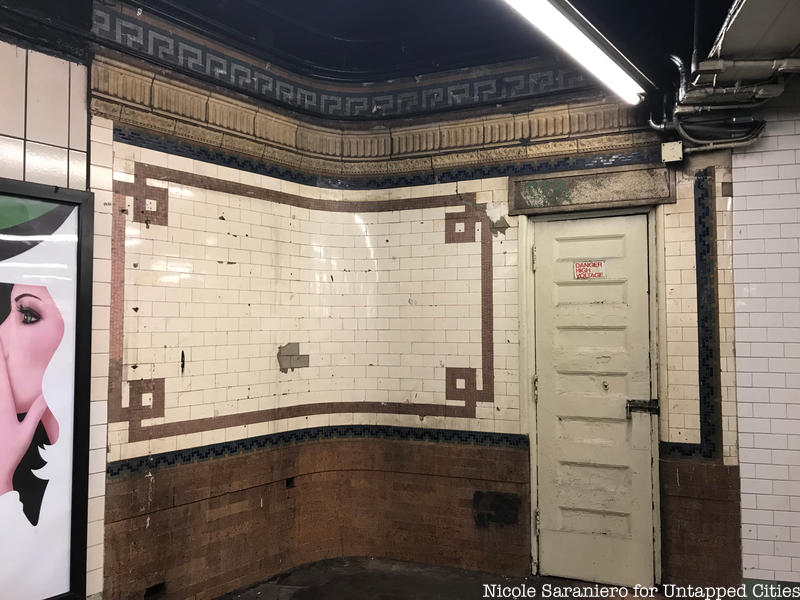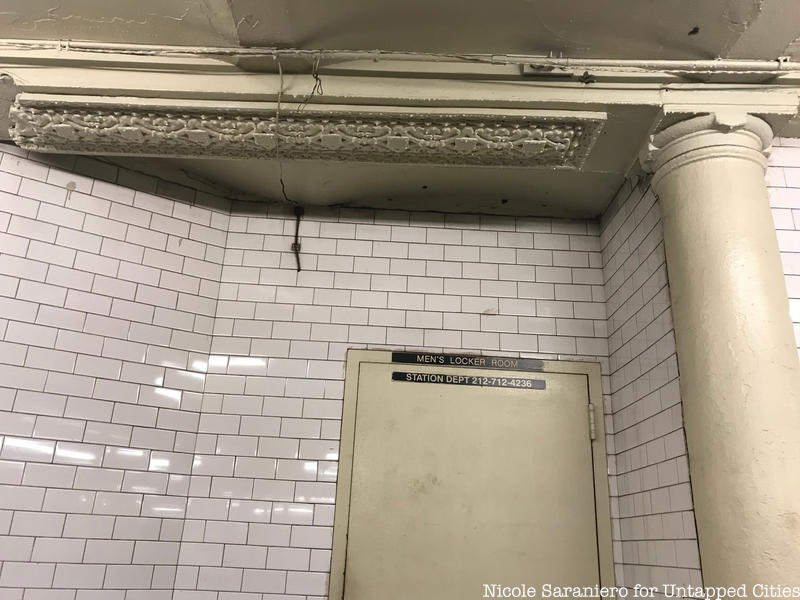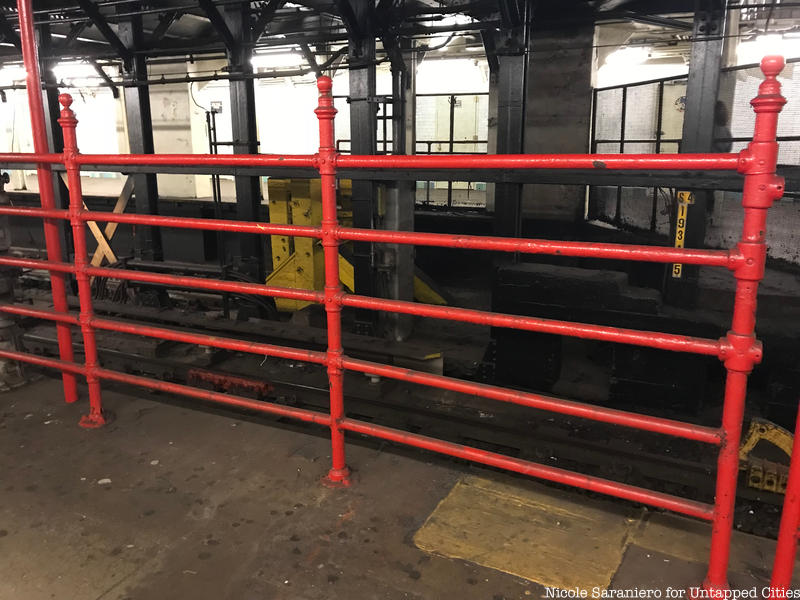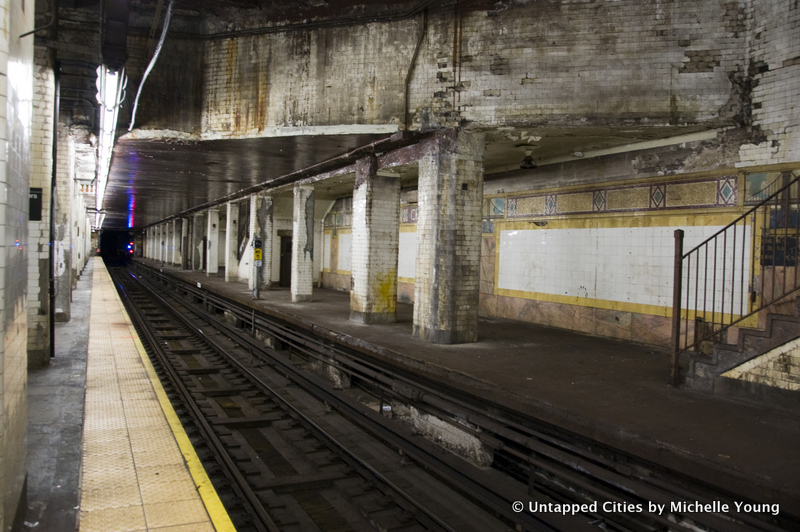10. Original 1904 Subway Ornamentation

When tasked with designing the original twenty-eight subway stations of the IRT, architects Heins and LaFarge had little to work with in terms of the architectural structure of the stations. Unlike train stations, the subway stations were below ground and therefore not stand alone structures. The designing duo basically had to take an enclosed industrial setting with narrow platforms and make it pleasant for subway riders. Most of the architectural work they did inside the stations was ornamental.
In the Times Square subway station, you can see bits and pieces of Heins and LaFarge’s decorative detailing in the form of mosaic tiles, terra cotta cornices, and walls covered in a combination of white tiles and iron-spot brick. Throughout the original twenty-eight stations there are great examples of original mosaic work that still exist. When possible, Heins and LaFarge drew on the history of the subway station’s location to inspire the design. For example, there is a Dutch house in the Wall Street station which represents New York City’s early colonial foundations, and the massive, terra cotta murals inside the Fulton Street Station pay homage to Robert Fulton, the man who developed the first commercially successful steamboat.
In the Times Square Station, you can notice that the round columns which line tracks 1 and 4 are different than the square steel beams you see on the rest of the platforms. That is because those rounded columns were part of the original rider platforms. In the image below, you can also see some decorative relief-work on the ceiling.

Spread across small sections of the shuttle Tracks 1 and 4 you can see red iron fences with small globes atop the posts. These fences are likely originals from the 1904 station.

Since subway stations were underground, the structures Heins and LaFarge designed for the system were aboveground cast iron, wire and glass kiosks and brick and stone shelters control houses. Only three of Heins and LaFarge’s original control houses still exist and can be found at Atlantic Avenue (next to the Williamsburgh Savings Bank), Bowling Green and 72nd Street.
You can discover many secrets of the NYC subway on our underground tour of the NYC subway!






